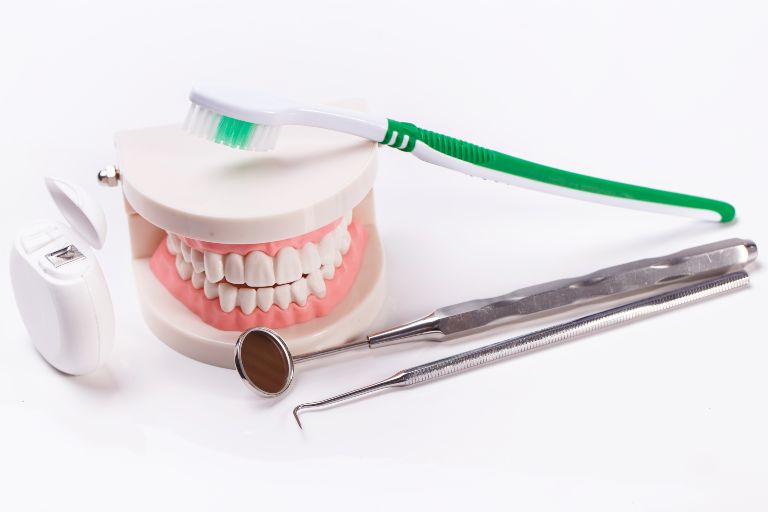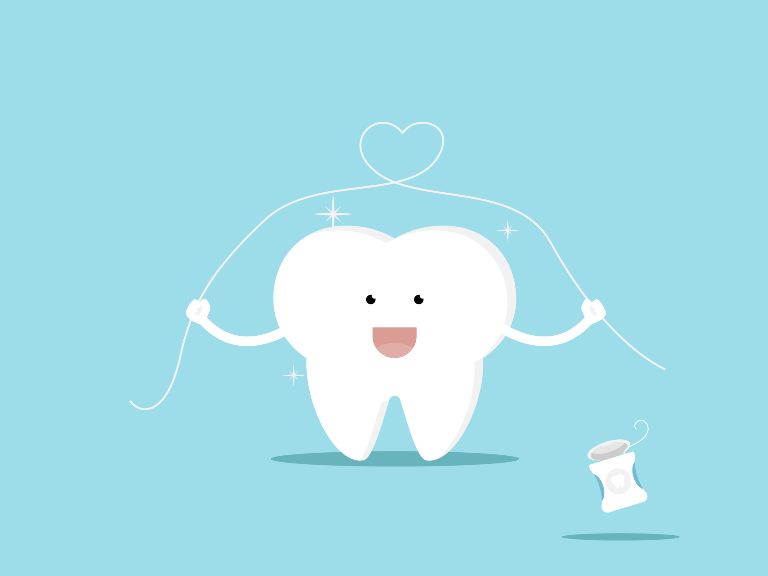Our smile is the forefront of our appearance, and to have a clear and presentable smile we need to take good care of our teeth so they can stay white, strong and healthy. Nobody likes to see a smile with brown, dark, or missing teeth.
Brushing our teeth twice a day is the most well-known and sure way to keep our teeth clean, polished and healthy. However, just brushing our teeth is not quite enough to avoid cavities and stay away from bad breath.
When food gets stuck in between our teeth and by our gums it can rot and cause an incredibly unpleasant smell, creating a foul taste in the mouth as well as bad breath. Not only will food stuck between the teeth cause breath to smell bad, but it can also attract unwanted bacteria that eat away at your teeth and causes cavities. If the tooth decay gets more serious, then it can result in having to get a root canal and a new tooth filling to replace the damaged material.
For these reasons using dental floss is very important. With dental floss, you can get in between and behind your teeth where it’s hard for your brush to reach. It becomes far easier to fully rid your teeth of any debris that was nestled back in the little nooks and crannies that your toothbrush just can’t reach.
Flossing your teeth once a day (preferably in the evening) is generally sufficient to keep the food that’s stuck around your teeth and gums from starting to rot and mess up your teeth.
In this article we’re going to take a little deeper look into exactly what dental floss is, how to floss teeth properly, and various techniques to try and give the whole process a little structure and hopefully provide you with some useful tips on how to use dental floss.

Dental floss (which can also just be called “floss”) is a thin wire made of various filaments that are used to clean out dental plaque from our teeth’s surface and get rid of food that gets lodged in between our teeth and gums.
The use of dental floss helps us keep plaque from building up on our teeth and also reduces the risk of developing gingivitis, which is a condition characterized by inflammation of the gums.
Dental floss goes all the way back to the early 1800s when a dentist named Levi Spear Parmly from New Orleans recommended that running a waxen silk thread along the sides of the teeth and in between the teeth and gums would help eliminate unwanted food debris that was unreachable by other means. Doctor Parmly referred to it as essential to maintaining clean teeth and oral health.
Although the first known mention of floss was by Levi Spear Parmly in 1819, it was only available commercially over 60 years later in 1882. A company called Codman and Shurtleff were the first to start producing it, making an unwaxed silk floss. Almost 20 years later, in 1898, the Johnson and Johnson Corporation was the first to receive a patent for dental floss. They made it from the same type of silk material that doctors used in silk stitches.
It was only by the 1970s that flossing became part of the average daily hygiene routine for the majority of Americans and Canadians. It started becoming more widespread around the rest of the world after
the 1980s. It is now known across the world as one of the most efficient ways of keeping your teeth clean and maintaining proper oral health.

So now that we’ve established all the benefits of flossing and how important it is, it’s time to start talking about the practical side; technique!
The first step is to wash your hands since you’ll be putting your fingers in your mouth and handling the floss and you don’t want to be putting dirty hands in your mouth.
After this, the next steps can be divided into four rhyming words that are easy to remember; wind, guide, glide and slide.
Take about 18 inches of floss and wind it around the index finger on one hand. You can also wind it around the middle finger, whichever is more comfortable. Then wind a bit of floss around the index or middle finger on the opposite hand. If you use your middle finger it allows you use the index finger to guide the floss. It might seem like a lot of floss, but trust me, you’ll need it. Use your index fingers and thumbs on each hand to pinch the floss on both sides so that you have a good 1-2 inches available for flossing.
Next, hold the floss taut and guide it gently between your teeth. Move the floss back and forth in a kind of zig-zag motion. Don’t be too forceful, and try to let the floss glide as you wrap it in a C shape around each tooth and clean it of plaque and food debris.
Slide that floss along the surface of each tooth, and always remember to get the back of the teeth as well as under the gum line as a good deal of food can get stuck under there. You can use your thumbs or index fingers as guides for the floss as you gently clean your teeth.
With this technique you’ll be able to effectively floss your teeth with any type of dental floss; dental tape, spongy floss, waxed, or unwaxed. Using the correct technique is the most important. The type of floss you choose is solely up to you and is mostly a thing of preference.
There are also hand-held flossers, where you can use a similar technique. Electric flossers also exist, and with those you use all the same techniques, only it saves you the trouble of having to move your hands back and forth. Whichever floss you use, these techniques will apply.

Some of the most important things to pay attention to while flossing; be consistent and be gentle! There’s no need to dig aggressively at your teeth and gums as that could cause damage. Just ensure that when you floss you hit every tooth and carefully clean out your mouth.
If you want to keep your teeth healthy and avoid bad breath and cavities, you’ll want to floss every single day. Think of making part of your evening tooth brushing routine and it might make it a little easier to make it a habit. Once you’ve got flossing in your routine as a daily habit it’ll quickly become second nature and you won’t even have to think about it after a while.

